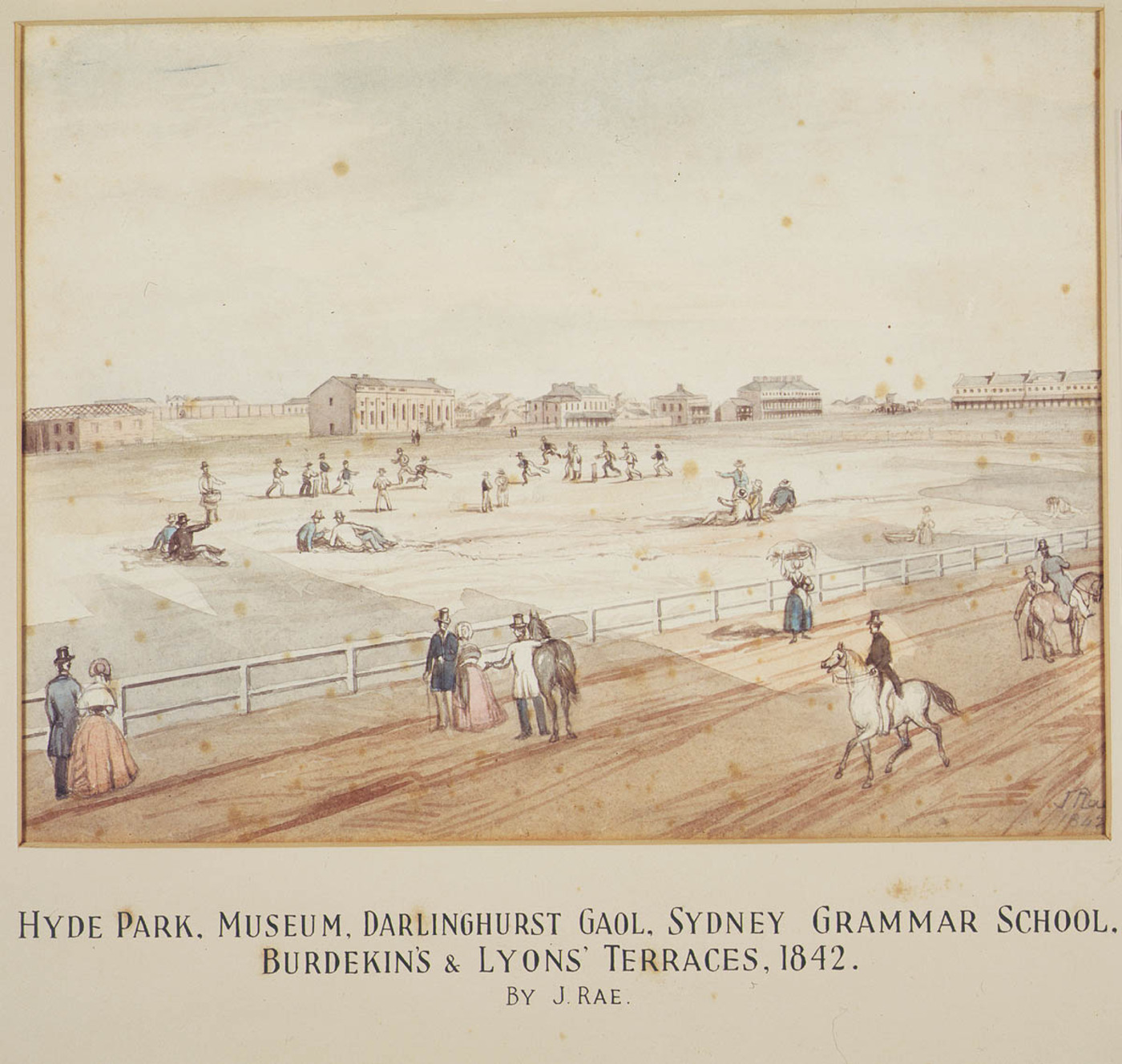The Dictionary of Sydney was archived in 2021.
James Waugh's Stranger's Guide to Sydney
 The Stranger's Guide to Sydney,, courtesy Mitchell Library, State LIbrary of NSW (DSM/981.1/W)
The Stranger's Guide to Sydney,, courtesy Mitchell Library, State LIbrary of NSW (DSM/981.1/W)
Listen to Lisa and Sean on 2SER here
James Waugh was a stationer and bookseller who migrated to Australia in 1840 and by 1851 had set up his own bookselling business. He soon realised there was a market for guides of the city and published the first edition of the The Stranger's Guide to Sydney in 1858, and then a second edition in 1861. The guidebook could be bought from Waugh's bookshop at 286 George Street, on the corner of Robin Hood Lane, for the price of 2s 6d. He wrote in his preface that he was inspired to write the guide because of a gap in the market: 'The want of a cheap and portable Guide, for the use of strangers visiting Sydney, induced the Publisher to get up this little work'. These historic tourist guides contain all sorts of observations about Sydney, its buildings and how locals lived. Unusually, he arranged all the key information into a series of four walks. He included a map of the city and a directory of the various streets and public building. They are an amazing source for the urban historian. Waugh's second edition almost doubled in size, and as well as the walks included a listing of favourite pleasure excursions in the neighbourhood, and some practical timetables for coach and steam transport. Can you believe it? Walking tours of Sydney from 1858 and 1861. Waugh deliberately arrange his guide with a series of walks 'in order that those who have but a short time to spend in town, may have an opportunity of seeing as much of it as possible'. I believe these are among the first self-guided walking tours to be published in Sydney. Waugh's guide presents a landscape that is at once familiar to the contemporary reader and oddly different. And it was this sense of the strangely familiar - the discordant memory of the city - that inspired me to re-present Waugh's walk for a 21st century audience. We wanted to re-envision Sydney through Waugh's eyes. The result is a new walk devised for smartphones on the City of Sydney's Sydney Culture Walks app for mobile devices: The Stranger's Guide: Sydney 1861. A spot of cricket in Hyde Park, Hyde Park, Museum, Darlinghurst Gaol, Sydney Grammar School, Burdekin's and Lyons' Terraces, 1842 by John Rae, Dixson Galleries, State Library of NSW (DG SV*/Sp Coll /Rae/19)
A spot of cricket in Hyde Park, Hyde Park, Museum, Darlinghurst Gaol, Sydney Grammar School, Burdekin's and Lyons' Terraces, 1842 by John Rae, Dixson Galleries, State Library of NSW (DG SV*/Sp Coll /Rae/19)
- he notes the protracted construction of St Andrew's Cathedral (doesn't every big build run over time?): 'When finished St Andrew’s Cathedral will be an imposing structure. The patience of many has been wearied out from the length of time it has been in building. Of late, however, it has gradually been verging towards completion.'
- there were once three mail deliveries a day!: 'There is a delivery three times a day, viz at 9am, 1 and 4pm; but on extraordinary occasions such as the arrival of an English Mail, a delivery takes place as soon after as possible.'
- when young Sydneysiders were after a spot of cricket, they descended upon Hyde Park: 'It is now the resort of the youthful inhabitants for the favourite and healthy game of cricket, and the number who may be seen engaged in this sport, on a pleasant day, is truly astounding.'
- inebriated Sydneysiders kept the courts busy. Waugh noted of the George Street Police Office and Courthouse: 'A court is held daily, and were it not for drunkenness, the parent of every vice, we venture to affirm there would be little to be brought before its jurisdiction.'
- parliamentarians grandstanded and waffled on, even in 1861. Waugh recommended: 'the stranger should by no means leave Sydney without visiting this House of Representatives, and listening to the specimens of colonial eloquence which it nightly pours forth'.
 Map from the 1861 edition of The Stranger's Guide to Sydney, courtesy State LIbrary of NSW (DSM/981.1/W)
Map from the 1861 edition of The Stranger's Guide to Sydney, courtesy State LIbrary of NSW (DSM/981.1/W)


Categories
Blog
2SER Breakfast
app
City of Sydney
Culture Walks
Lisa Murray
Sean Britten
Strangers Guide to Sydney
walking tours

